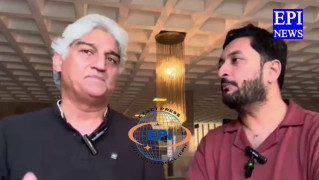US CENTCOM
Councller (250+ posts)
When Pakistan started its operation against the terrorists in its norther areas on June 15, 2014 a statement from Doug Frantz, Assistant Secretary, United States Department of State read, “The United States is fully supporting the military operation in the tribal region along Pak-Afghan border, and the operation is important because it is happening at a time when the ISAF would be leaving Afghanistan shortly.” Frantz said that the crackdown on the militants on both sides of the border was also important to prevent the outlawed TTP and Haqqani Network from establishing their safe havens on both sides of the border.
Today, fourteen months on, Pakistan has seen a drastic decrease in terrorists’ attacks but they have paid a price in the form of the attack on a Peshawar Church attack that killed 85, the Islamabad Court attack that killed 11 including a senior Judge and five attorneys, the suicide attack on Wagah Border close to India near Lahore that cost 55 lives, and the army public school attack that killed over 142—132 of them being innocent children. The APS attack in December galvanized the nation to stand firm with the military against all forms of terrorism. It also made it clear to the silent supporters of the TTP that the Pakistani nation will not tolerate their stance. After the APS attack the army intensified its counter attacks on terrorists. According to the ISPR statement issued on the operation’s first anniversary,
the military has destroyed 837 militant hideouts in North Waziristan, recovered and destroyed 253 tons of explosives, captured 18,087 weapons, conducted 9,000 intelligence-based operations and killed 2,763 militants, at the cost of losing 347 officers and soldiers (Express Tribune, June 15). In addition to the official figures, it seems that the operation has brought comparative peace and tranquility to Pakistani cities, which were previously under an intense militant threat, particularly in FATA. For instance, the total number of fatalities in FATA stood at 2,863 during the year 2014, whereas the fatalities from the first three months of 2015 stood at 411, a pro rata reduction of around a third. As far as the operation’s financial costs, Pakistani Minister of Finance,
Ishaq Dar, has said the operation may cost around $1.3 billion (Geo News, February 19). One weakness of the operation has been the government’s neglect to coordinate it with the government of neighboring Afghanistan. As a result, just as in many previous military operations when Islamist militants escaped by fleeing into North Waziristan district, this time they have sneaked into the relative safety of Afghanistan. For instance, according to one local news report, “at least 400 families affiliated with militant groups—including members of al-Qaeda and the Islamic Movement of Uzbekistan—crossed into Afghanistan in December and now live in the homes of locals in lawless parts of the country”(Express Tribune, January 30).
In conclusion, no one will deny that Zarb e Azb was long overdue. So far it has managed to bring considerable calm to most Pakistani cities. Although the Pakistani military claims to have cleared major areas of North Waziristan and FATA the fear remains the most TTP leadership have slipped into Afghanistan and, if they are not dealt with, they will reorganize and relaunch their evil activities as soon as the military moves out of Northern Areas. Going forward it is important for Pakistan and Afghanistan to coordinate and work together to eliminate this threat so that peace and tranquility returns to the region that so deserves it.
Abdul Quddus
DET - U.S. Central Command
www.facebook.com/centcomurdu
Today, fourteen months on, Pakistan has seen a drastic decrease in terrorists’ attacks but they have paid a price in the form of the attack on a Peshawar Church attack that killed 85, the Islamabad Court attack that killed 11 including a senior Judge and five attorneys, the suicide attack on Wagah Border close to India near Lahore that cost 55 lives, and the army public school attack that killed over 142—132 of them being innocent children. The APS attack in December galvanized the nation to stand firm with the military against all forms of terrorism. It also made it clear to the silent supporters of the TTP that the Pakistani nation will not tolerate their stance. After the APS attack the army intensified its counter attacks on terrorists. According to the ISPR statement issued on the operation’s first anniversary,
the military has destroyed 837 militant hideouts in North Waziristan, recovered and destroyed 253 tons of explosives, captured 18,087 weapons, conducted 9,000 intelligence-based operations and killed 2,763 militants, at the cost of losing 347 officers and soldiers (Express Tribune, June 15). In addition to the official figures, it seems that the operation has brought comparative peace and tranquility to Pakistani cities, which were previously under an intense militant threat, particularly in FATA. For instance, the total number of fatalities in FATA stood at 2,863 during the year 2014, whereas the fatalities from the first three months of 2015 stood at 411, a pro rata reduction of around a third. As far as the operation’s financial costs, Pakistani Minister of Finance,
Ishaq Dar, has said the operation may cost around $1.3 billion (Geo News, February 19). One weakness of the operation has been the government’s neglect to coordinate it with the government of neighboring Afghanistan. As a result, just as in many previous military operations when Islamist militants escaped by fleeing into North Waziristan district, this time they have sneaked into the relative safety of Afghanistan. For instance, according to one local news report, “at least 400 families affiliated with militant groups—including members of al-Qaeda and the Islamic Movement of Uzbekistan—crossed into Afghanistan in December and now live in the homes of locals in lawless parts of the country”(Express Tribune, January 30).
In conclusion, no one will deny that Zarb e Azb was long overdue. So far it has managed to bring considerable calm to most Pakistani cities. Although the Pakistani military claims to have cleared major areas of North Waziristan and FATA the fear remains the most TTP leadership have slipped into Afghanistan and, if they are not dealt with, they will reorganize and relaunch their evil activities as soon as the military moves out of Northern Areas. Going forward it is important for Pakistan and Afghanistan to coordinate and work together to eliminate this threat so that peace and tranquility returns to the region that so deserves it.
Abdul Quddus
DET - U.S. Central Command
www.facebook.com/centcomurdu
- Featured Thumbs
- http://i.dawn.com/large/2014/02/5308636d914cf.jpg
Last edited by a moderator:
































